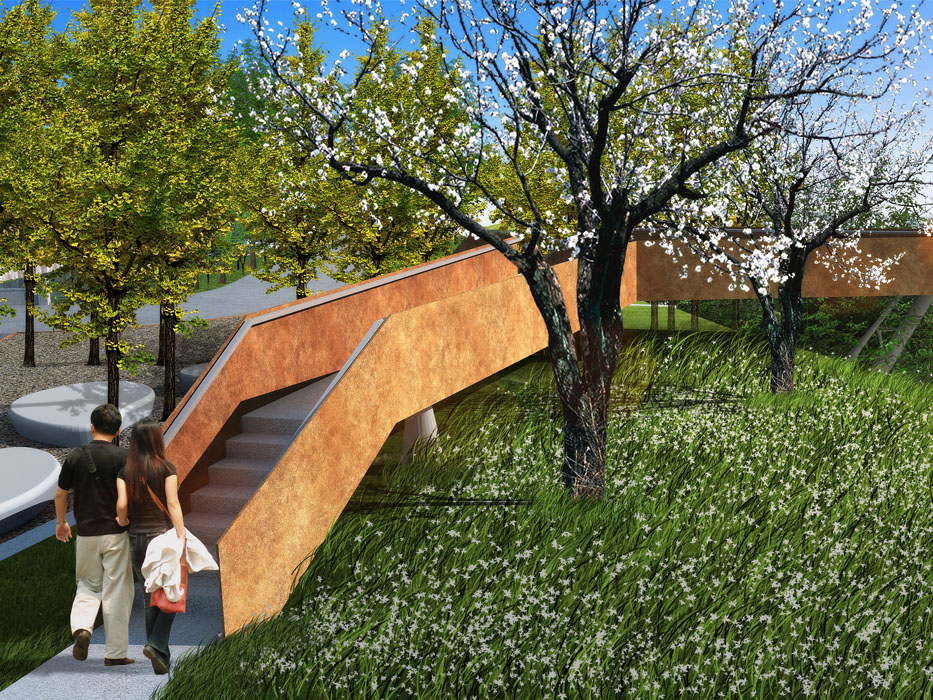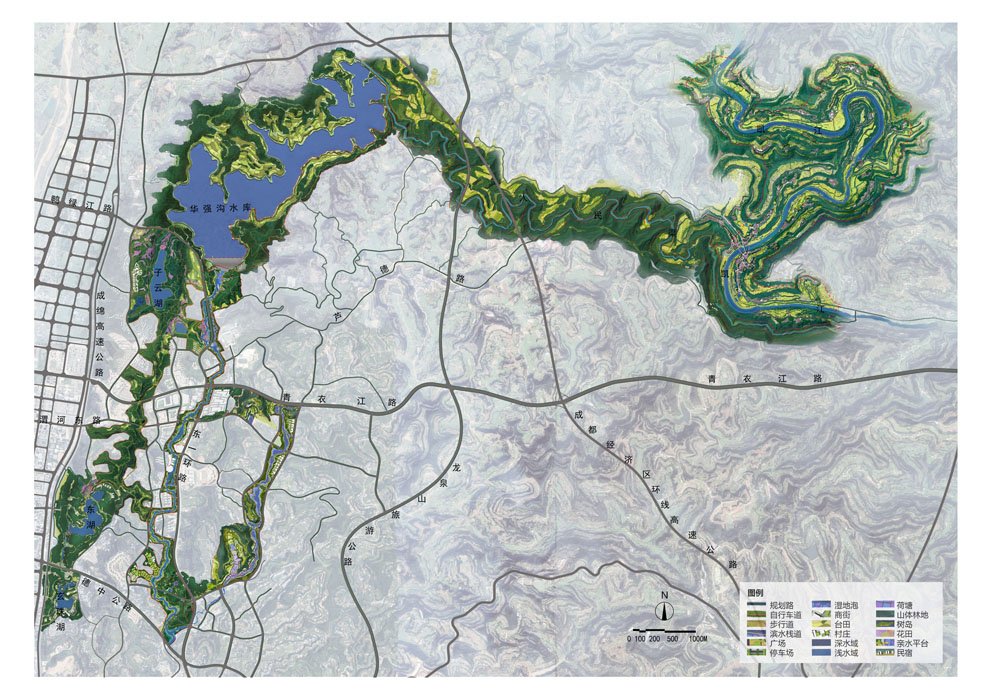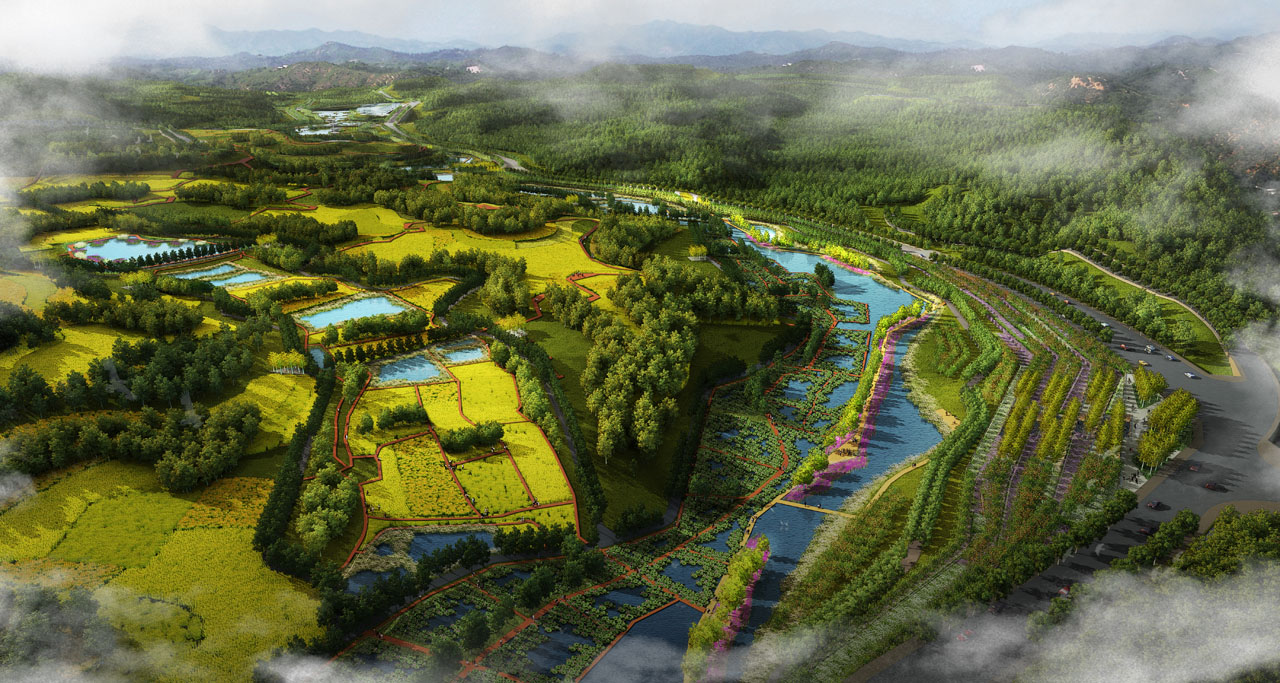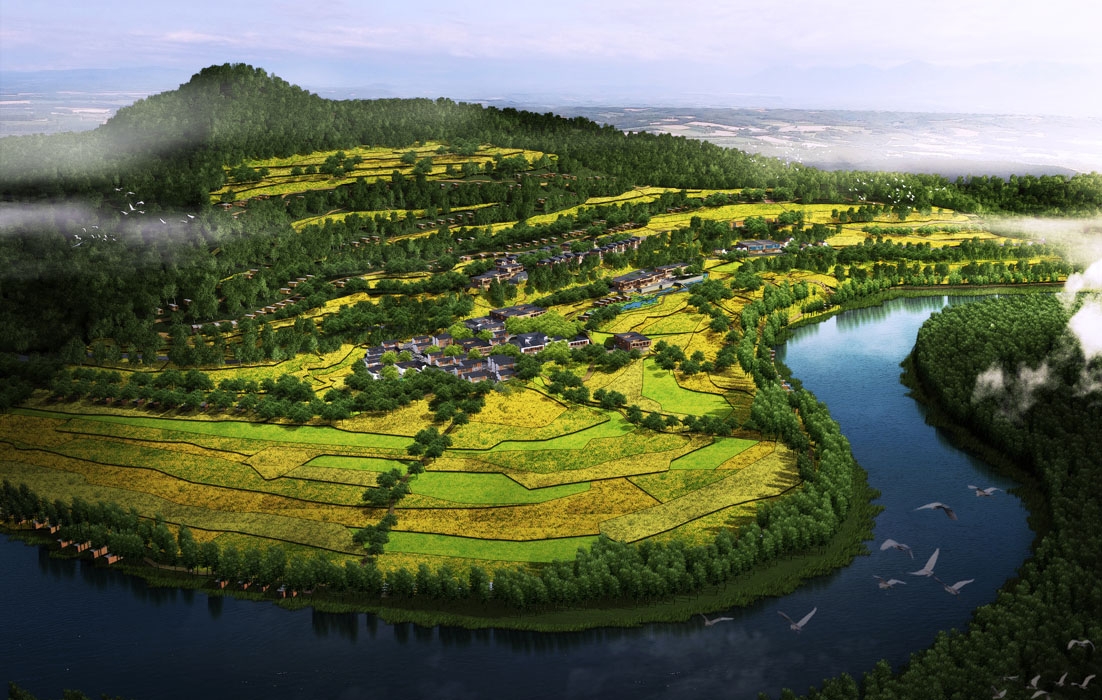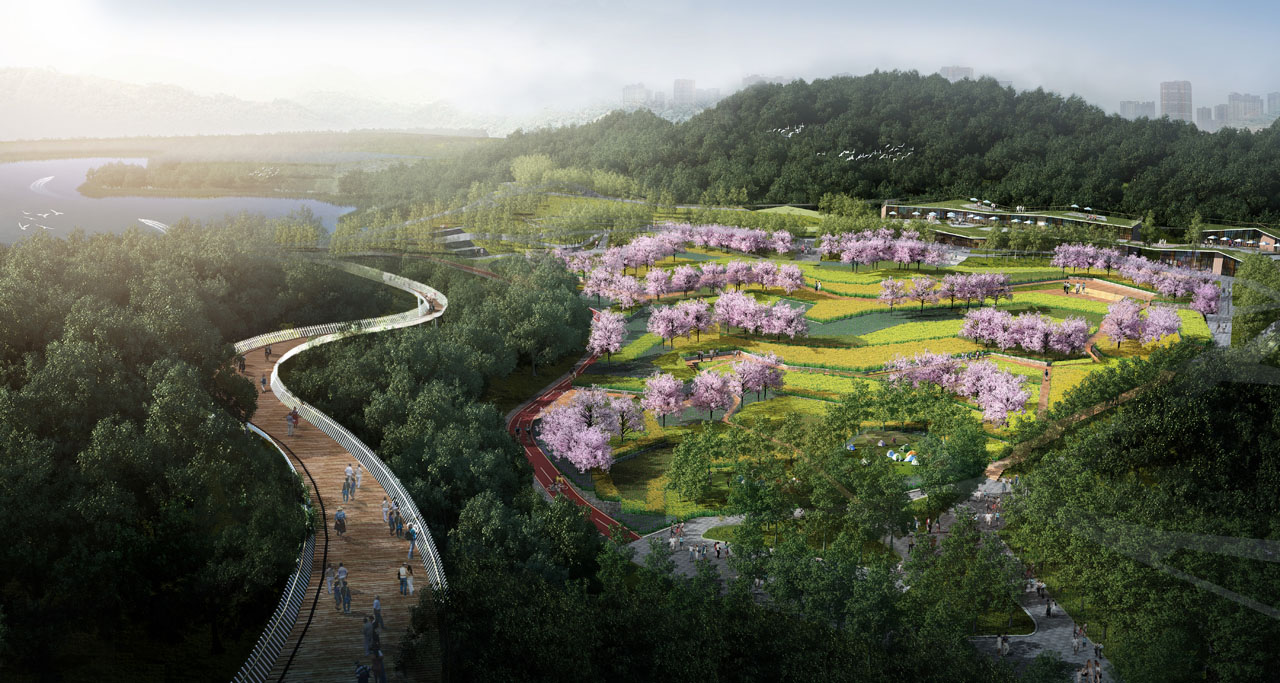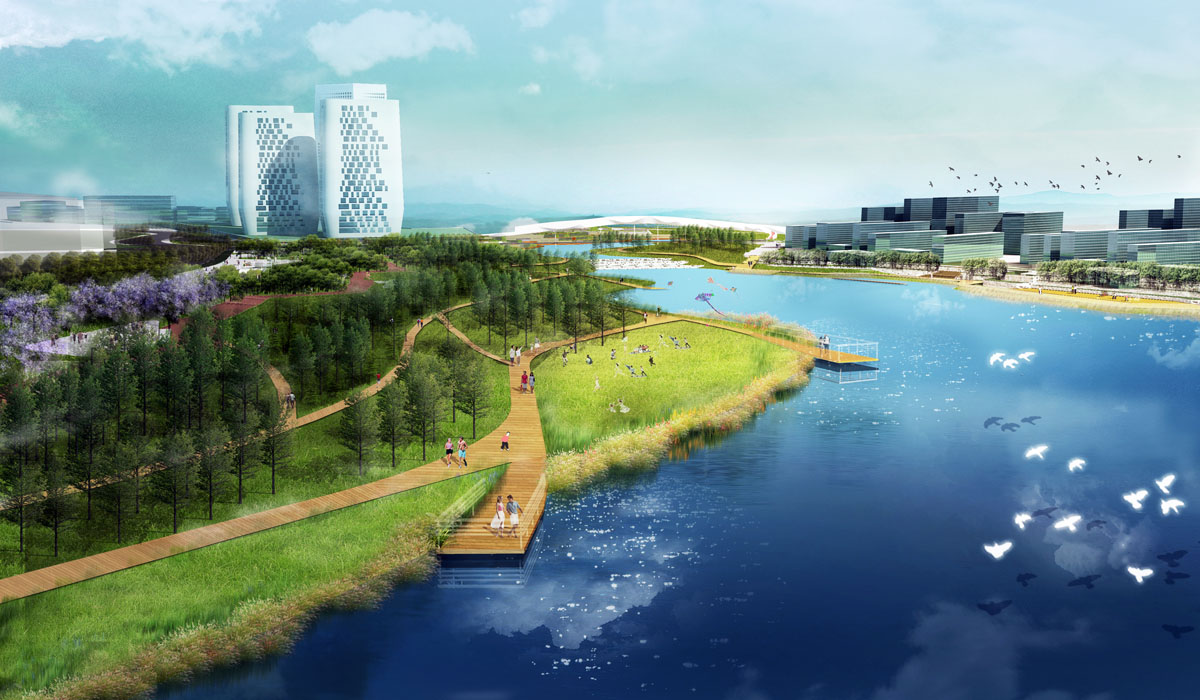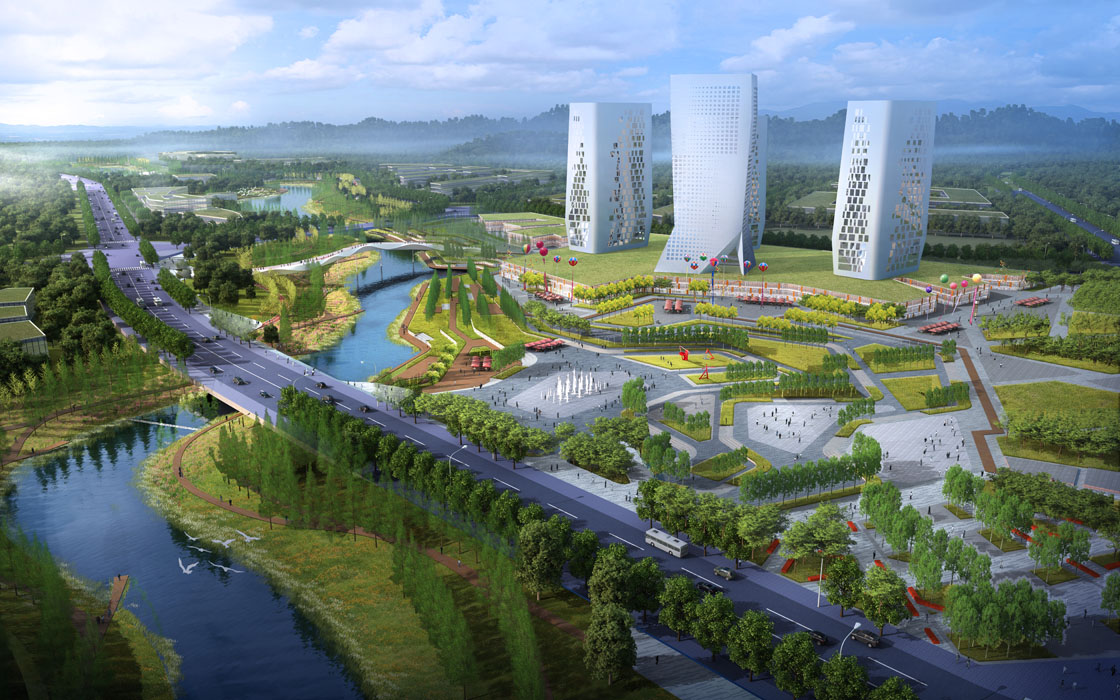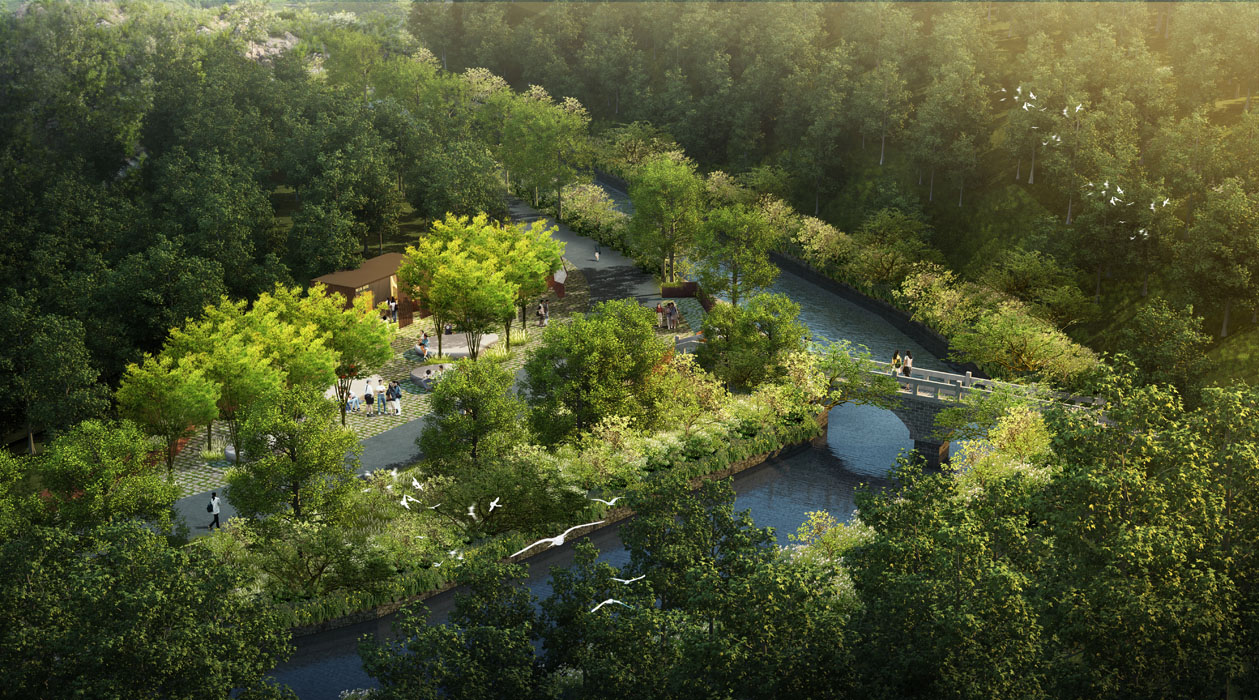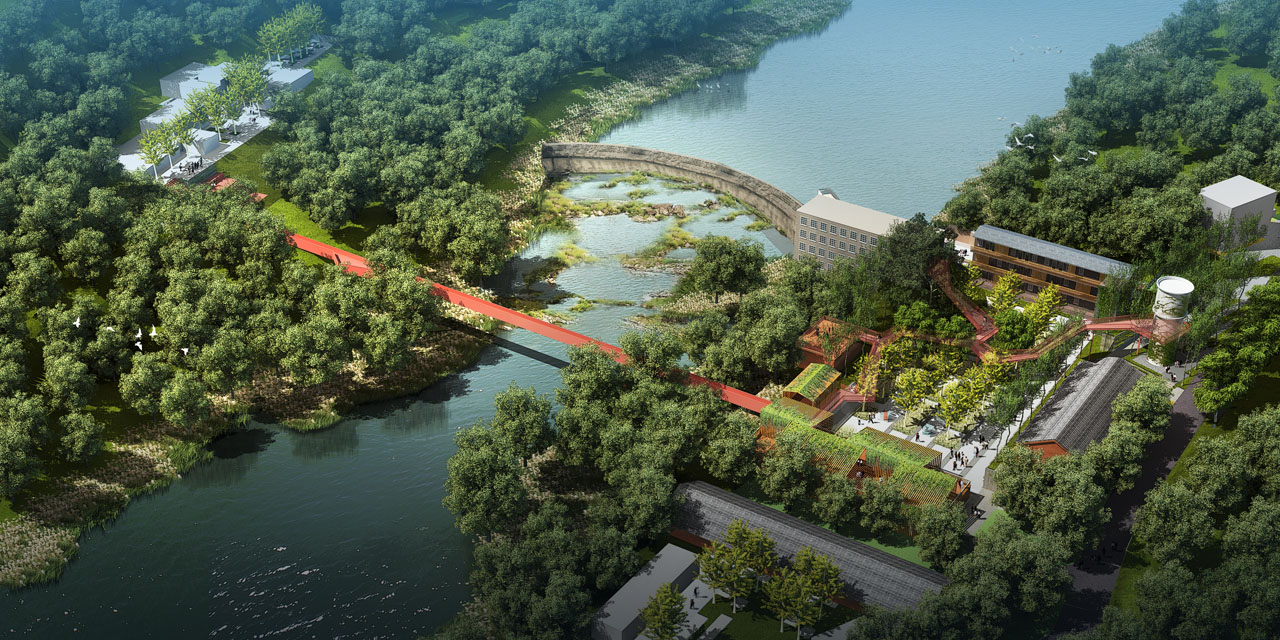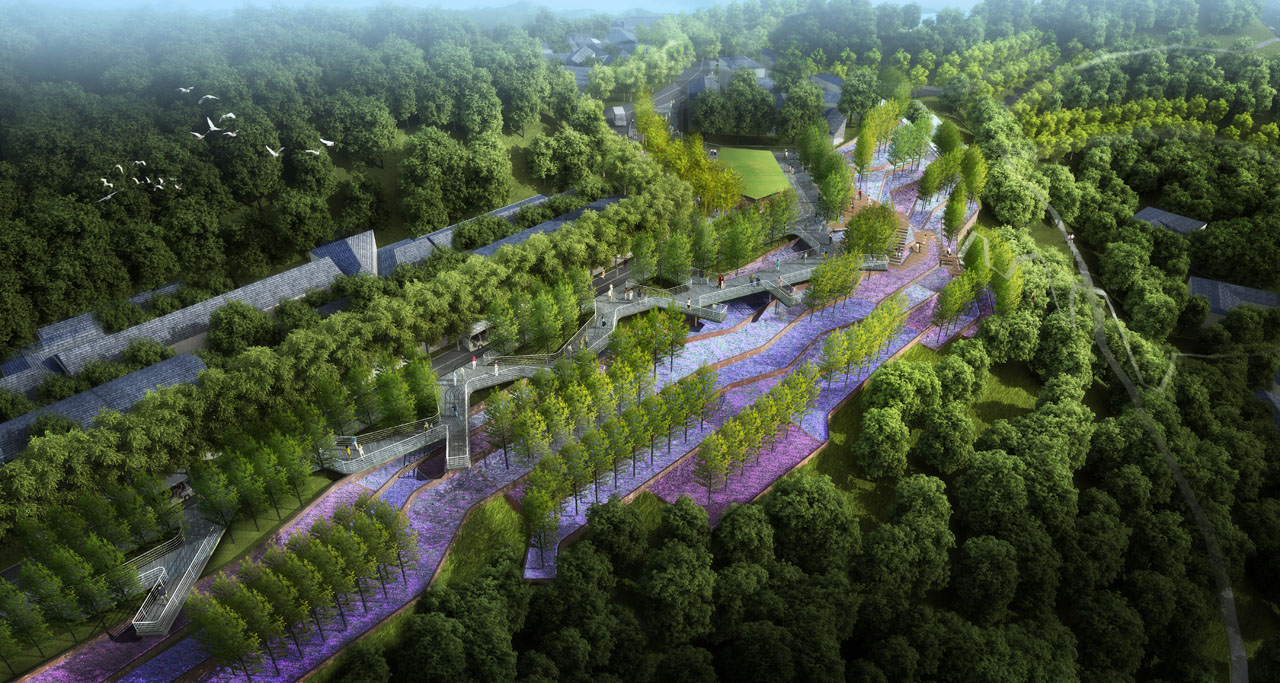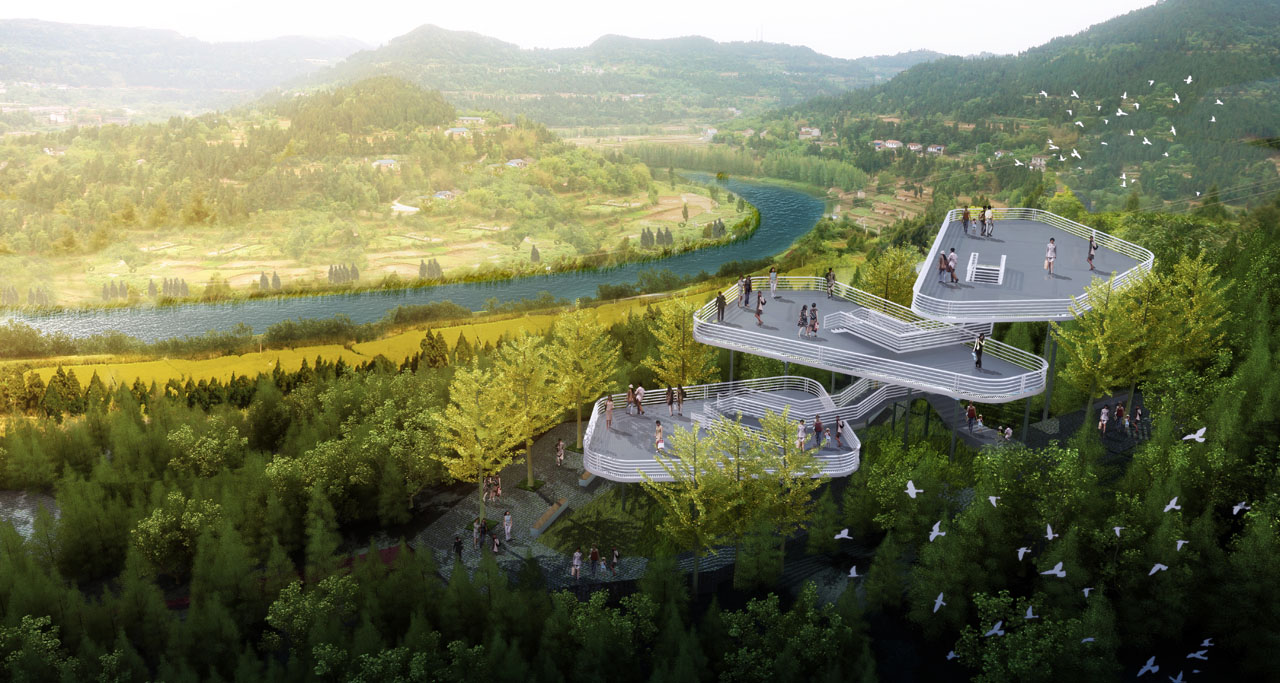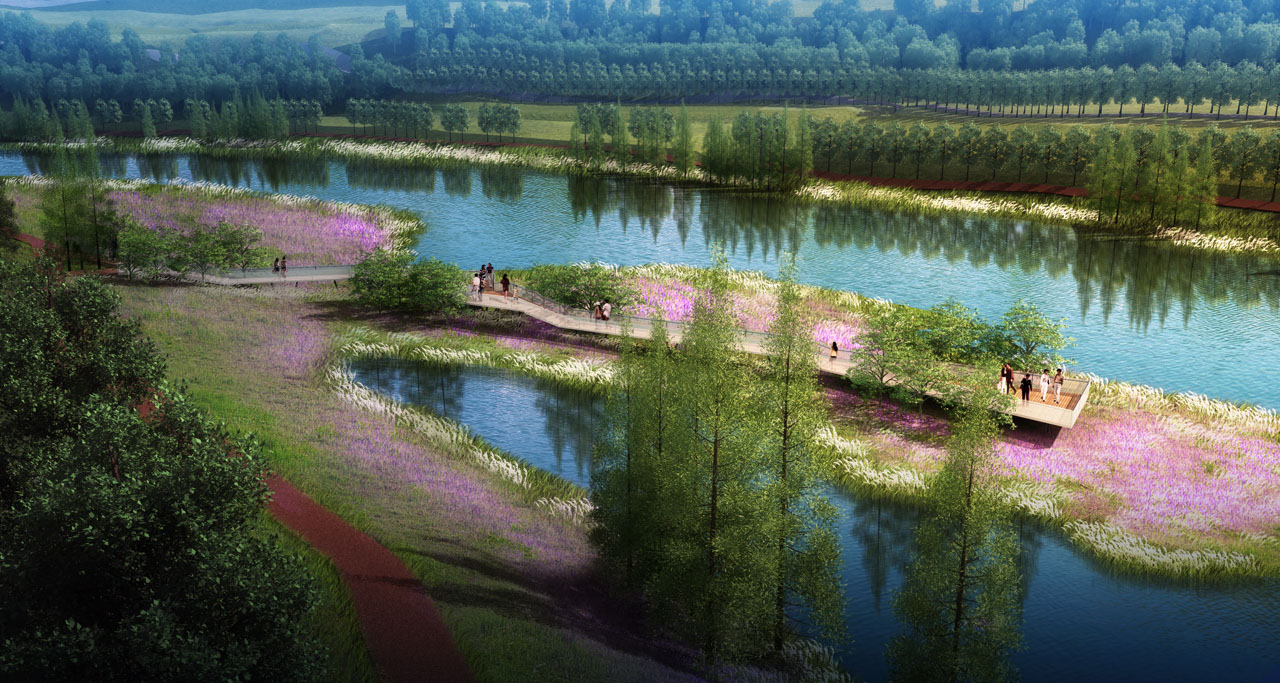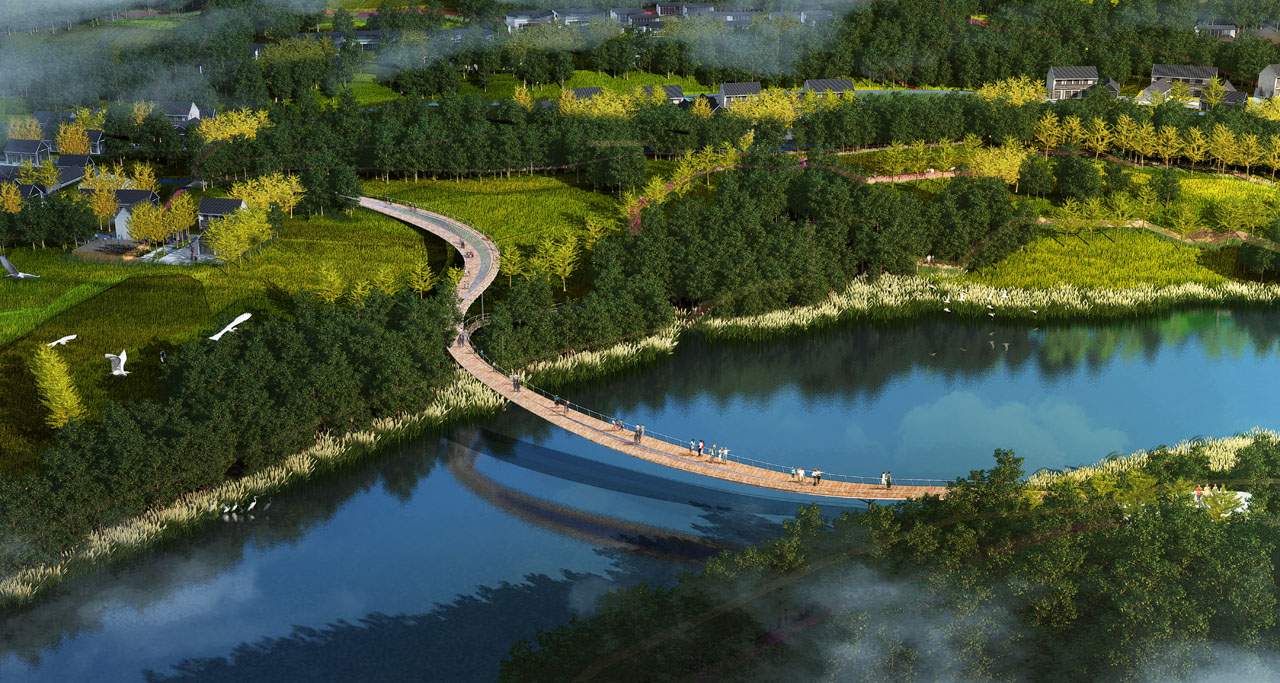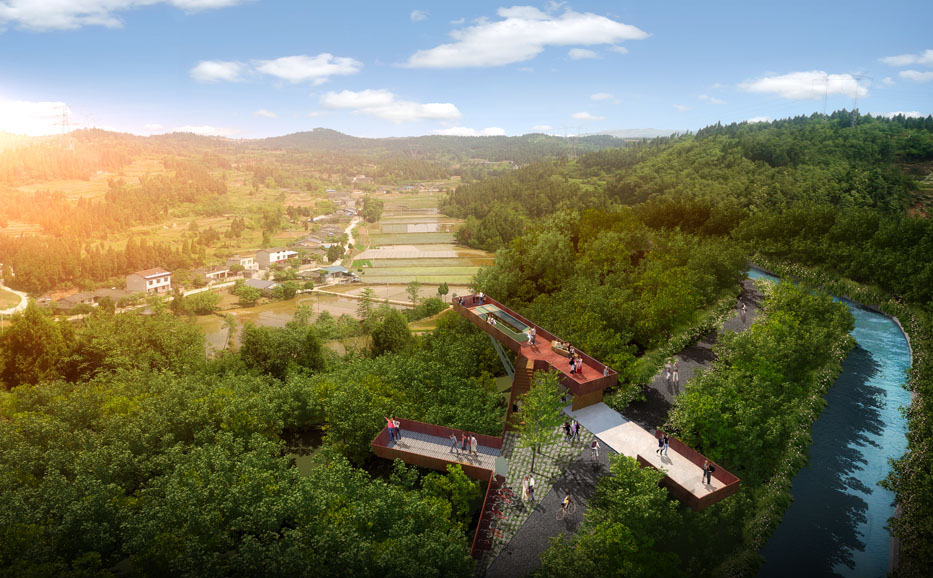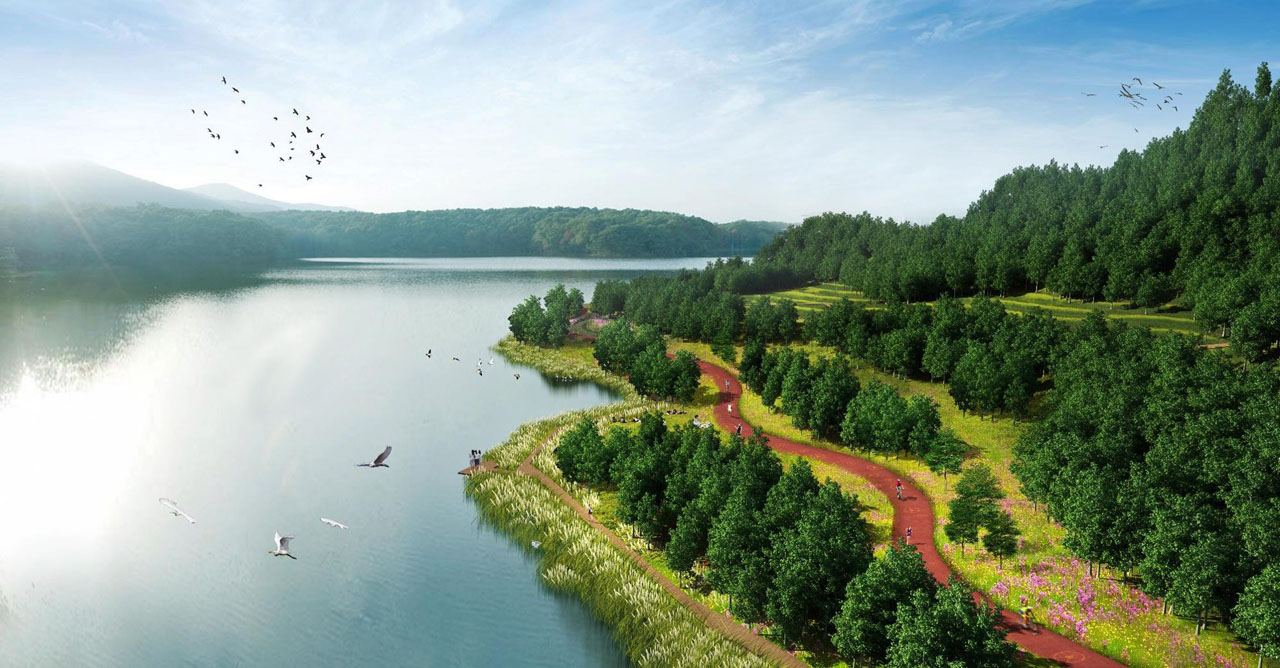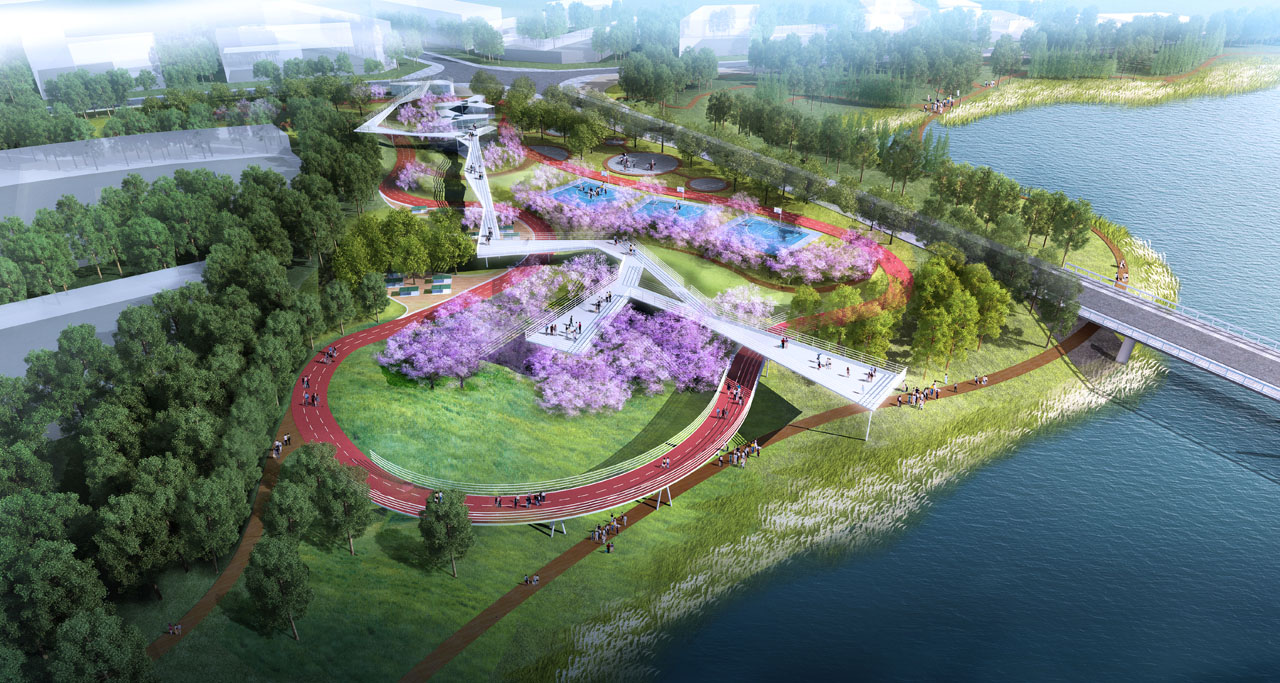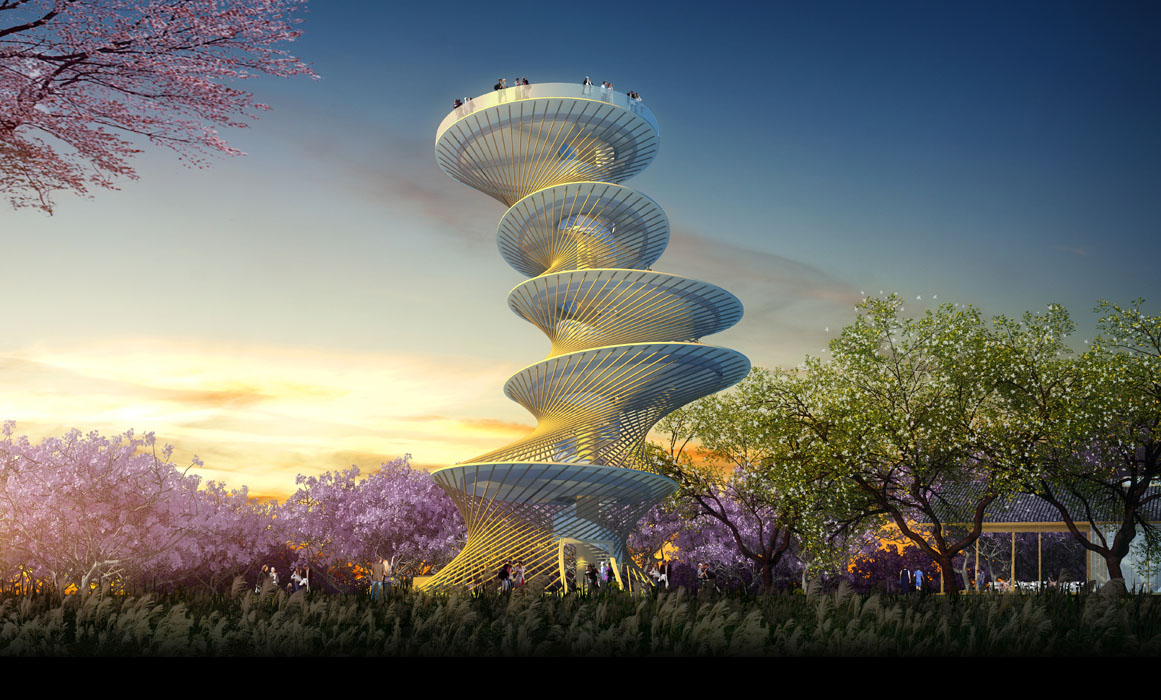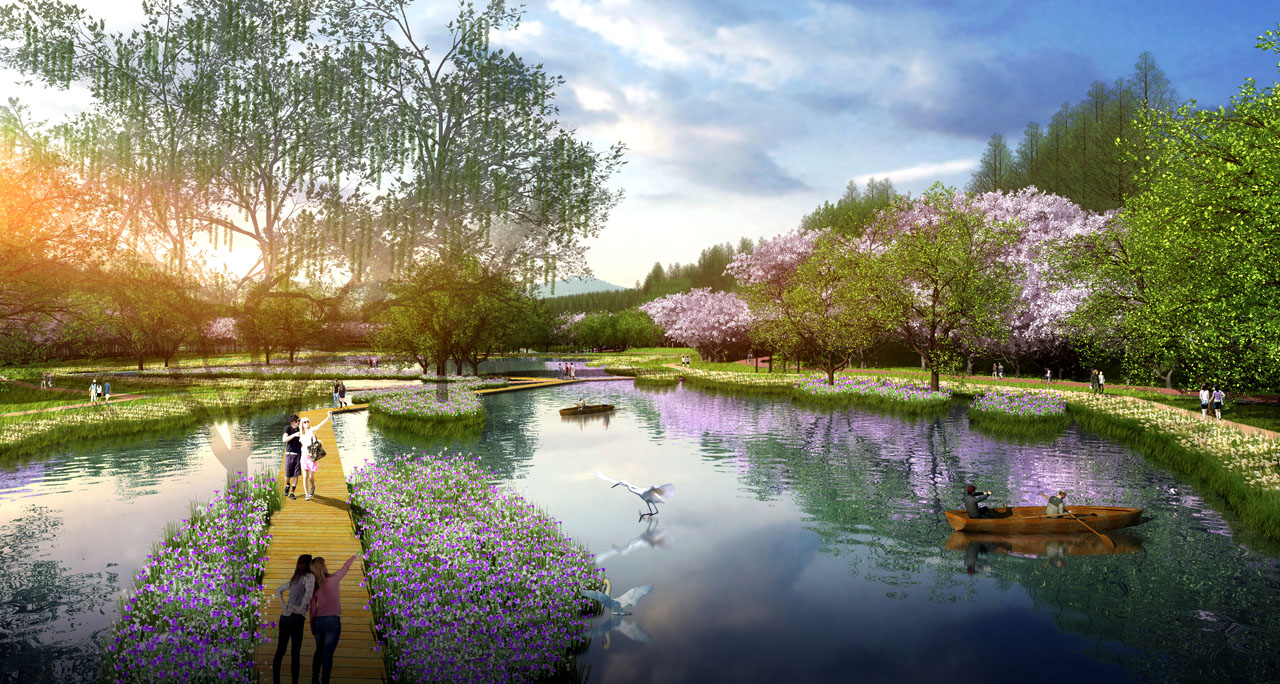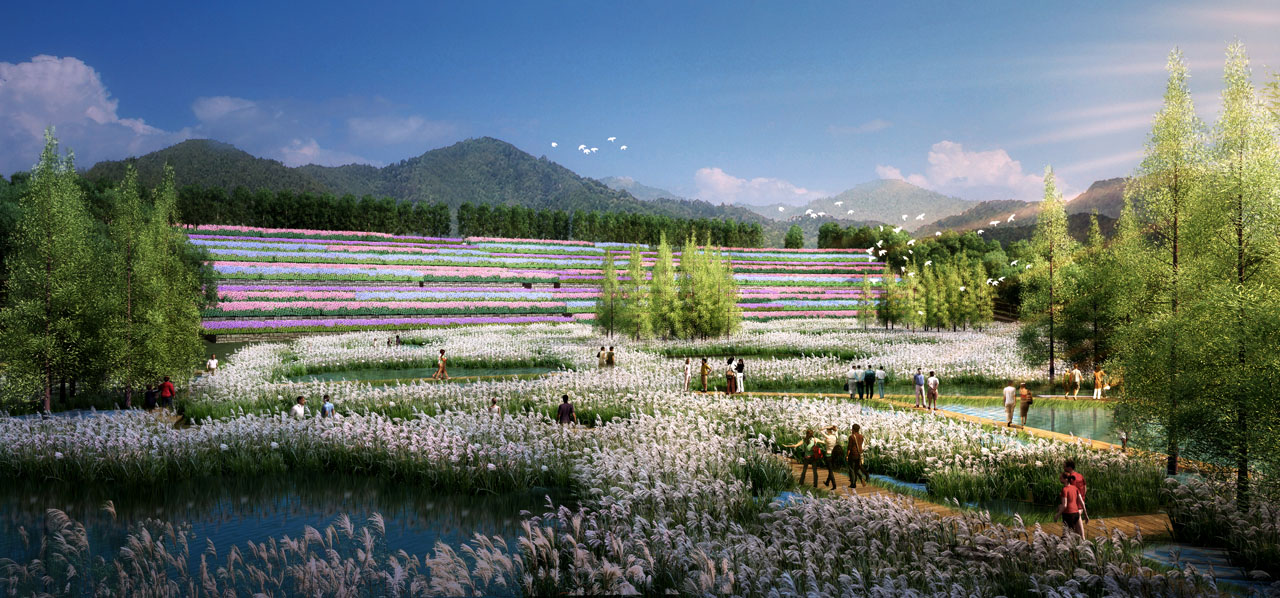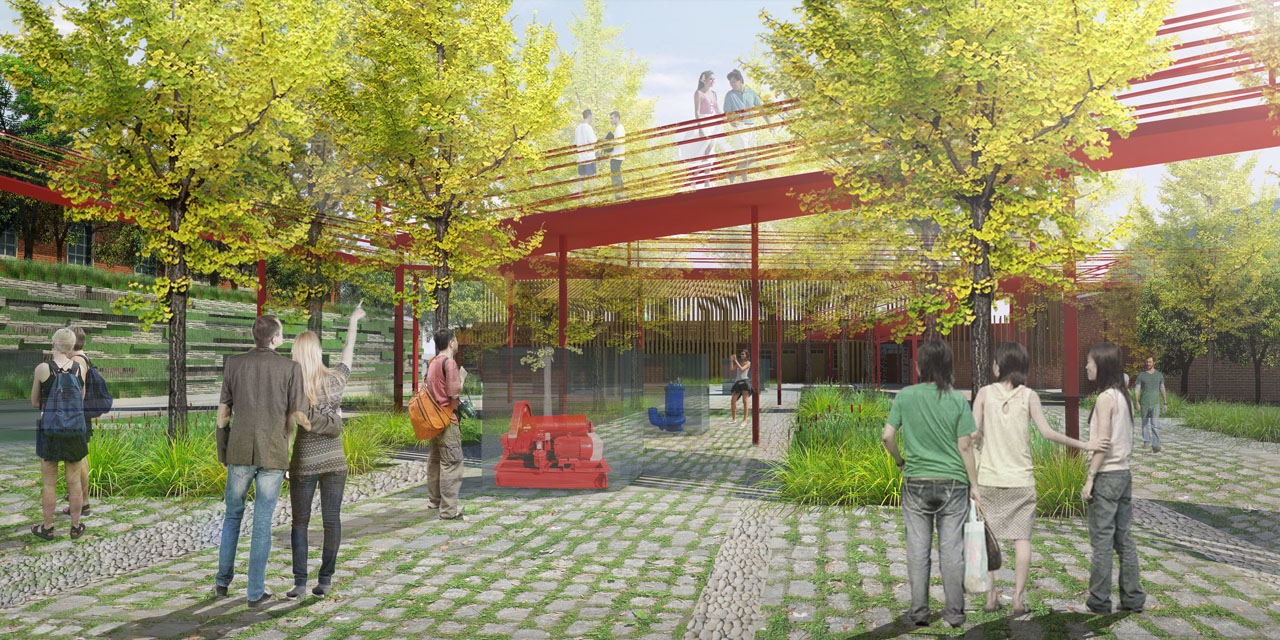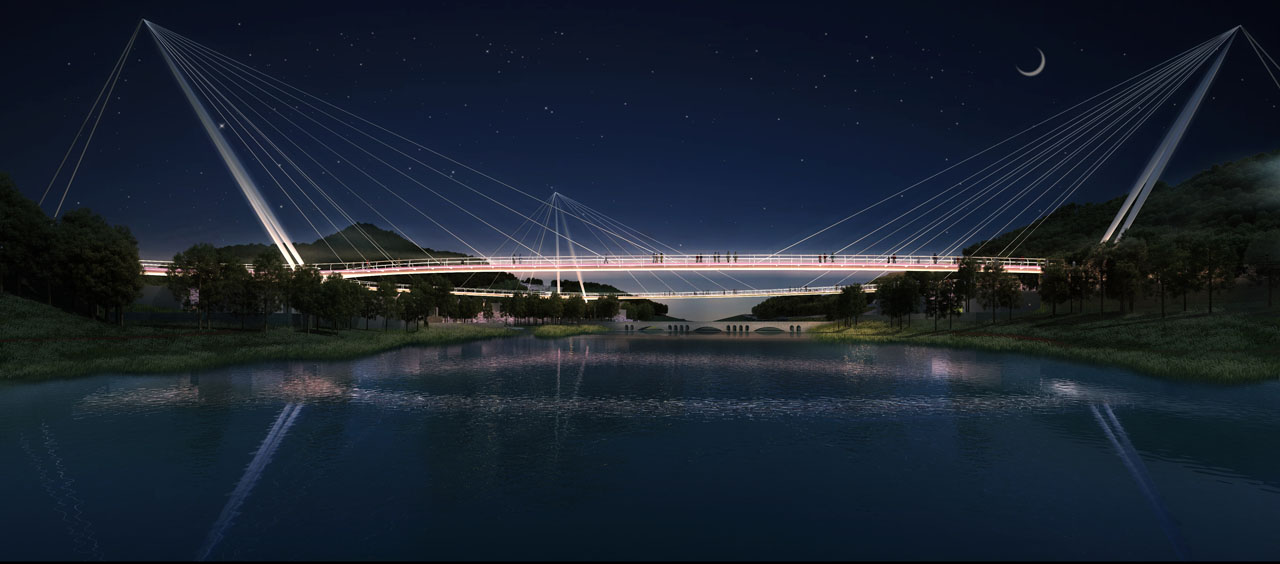Sichuan Deyang Jinxiu Tianfu Park
Project Information
- Project Location:
- China Deyang, Sichuan
- Project Scale:
- 2012.55 Hectares
- Design Time:
- April 2017
- Client:
- Deyang Jinxiu Tianfu International Health Valley Industrial Park Management Committee
Project Profile
1. Project Statement
Location: The project is located in Deyang City, Sichuan Province, in the eastern part of the central urban area, Jingyang District. It is part of the core area of the International Health Valley and serves as an important park cluster in the east-west corridor of the Health Valley. The project is divided into two major areas, east and west, connected by the Huaqian Lake Reservoir.
West: Includes the 45 Zhiqu area, Shoufeng River area, and Canceng Lake area. These are close to the city and have the closest relationship with urban areas.
East: Includes the Renmin Canal area and Kaijiang area. These are near the second line of the Chengdu-Mianyang Expressway and are closely connected to the Chengdu-Deyang-Mianyang economic development zone.
2. Objective and Challenge
Create China's Largest Health Theme Park:
- Healthiest: Integrate with nearby health industries to form a complete health industry chain and maximize cluster advantages.
- Most Advanced: Use advanced ideas, focusing on ecology and exercise, to create the most comprehensive health and fitness system.
- Most Unique: Utilize the hilly terrain to create a health theme park that highlights Deyang’s unique characteristics.
3. Design Strategy
Overall Layout - One Corridor, Six Sceneries, Stars Shining on Five Lakes
- One Corridor: A continuous health and fitness path.
- Six Sceneries: Six areas with unique landscape features and prominent main scenes.
- Stars Shining on Five Lakes: Many attractions are distributed across the five lake areas, like stars illuminating the Health Valley.
Overall Design
Design Principles: Environment and landscape design based on ecological protection.
Main Content: Ecological protection, ecological restoration, functional integration, and detailed design.
- Basic Farmland Protection: The project area includes a lot of basic farmland, especially in the Kaijiang and Renmin Canal areas, with some in the 45 Zhiqu, Shoufeng River, and Canceng Lake areas. Design must comply with farmland protection laws, keeping farmland functional while designing.
- Water Body Protection: Water is a key ecological feature. Design must ensure natural water processes for safety and purification.
- Vegetation Protection: The site has good plant resources, but future development poses risks. Design should carefully protect vegetation, focusing on forests (mixed, poplar, maple), shrubs, reed fields, and farmland. High vegetation areas like wetlands and shrub zones are important ecological resources.
- Local Heritage Protection: Local heritage sites are important for education, culture, and tourism. They showcase regional culture and history and are important community memories. Design should protect these resources.
4. Conclusion
The project is divided into six areas: 45 Zhiqu, Shoufeng River, Canceng Lake, Huaqian Lake, Renmin Canal, and Kaijiang.
- 45 Zhiqu: "Dynamic Foothills" - Create a dynamic space between urban forests and mountain streams.
- Shoufeng River: "Vine Waterfront, City Balcony" - Extend the city towards Shoufeng River, like a balcony reaching into nature.
- Canceng Lake: "Lake of Vitality" - Enhance the base, manage lotus wetlands, and showcase cultural elements.
- Huaqian Lake: "Shared Path" - A multi-functional, eco-safe, leisurely lakeside corridor.
- Renmin Canal: "Historical Scroll" - Showcase the canal's history, water culture, and diverse landscape as a unique eco-corridor.
- Kaijiang: "Bend Countryside" - Charming countryside corridor with natural and cultural attractions.
